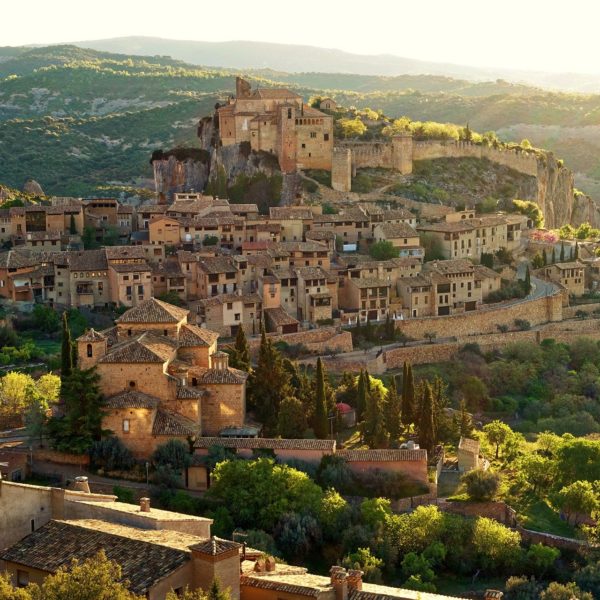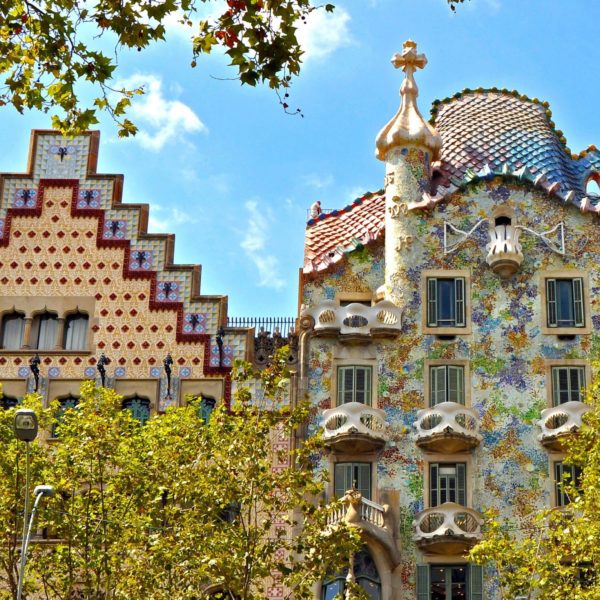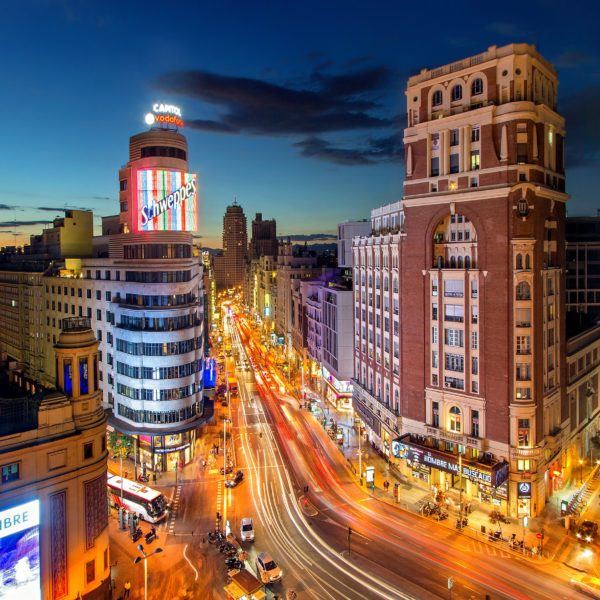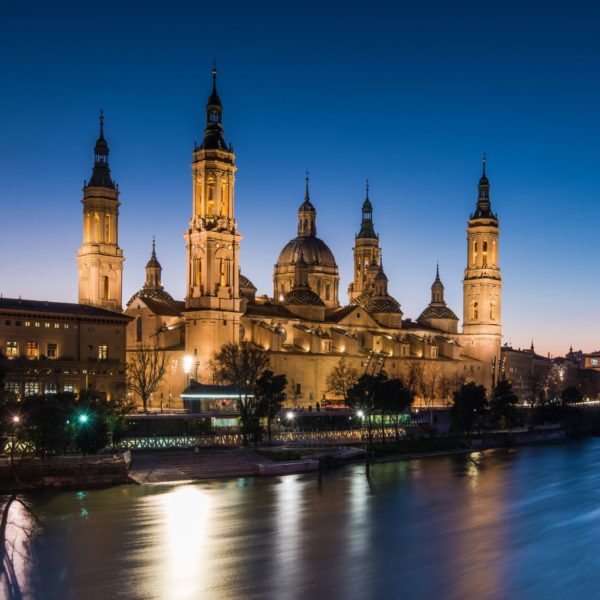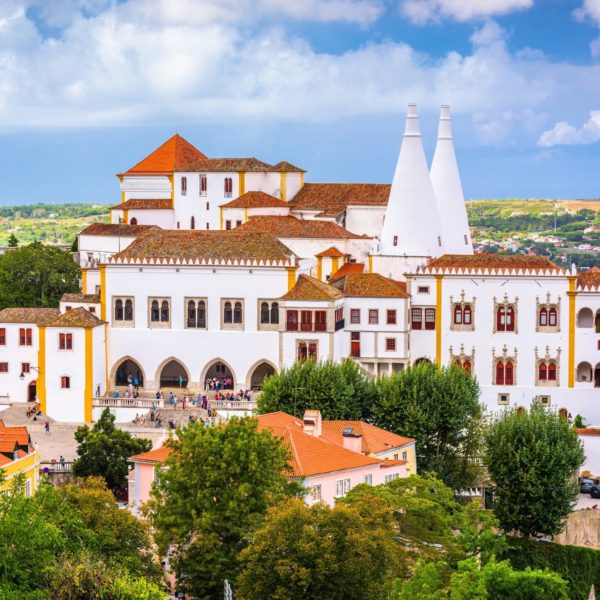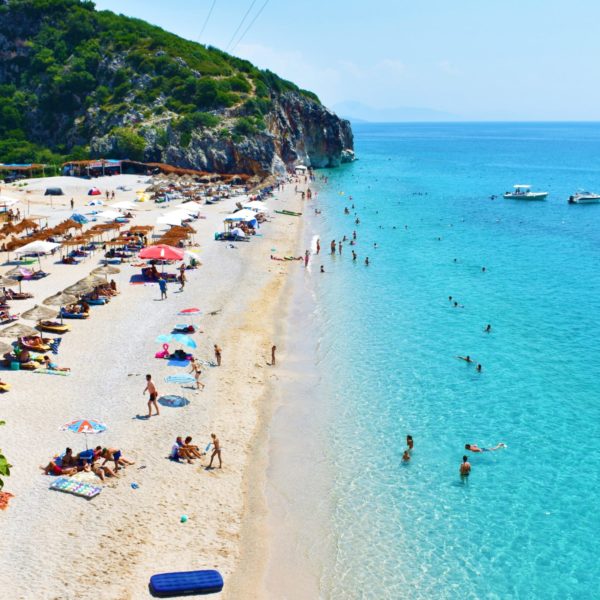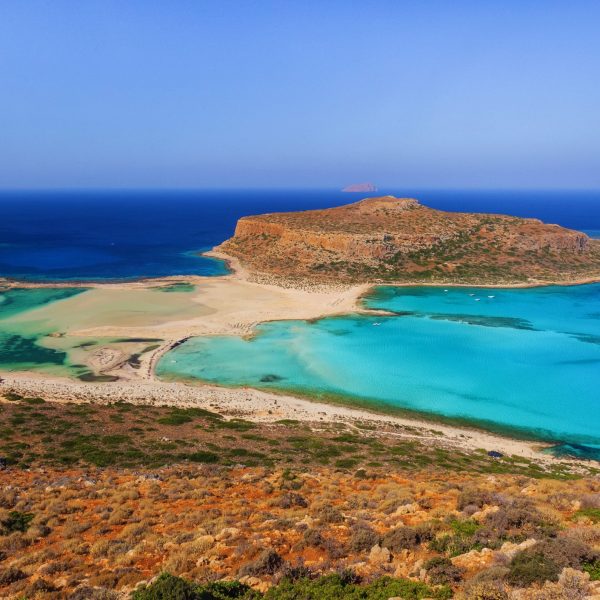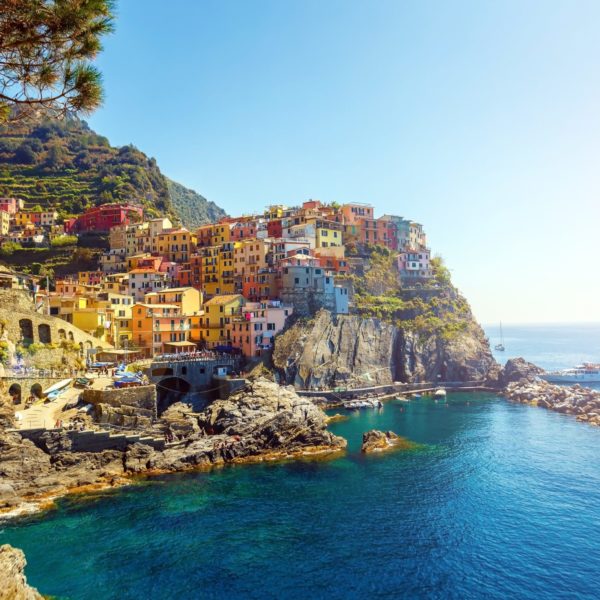The Alhambra in Granada in Andalusia is a monumental complex that contains the best preserved medieval Arab palace in the world. It is also the most popular historical monument in Spain, competing only with the Sagrada Familia in Barcelona. The complex contains palaces, splendid gardens, churches and the Alcazaba (citadel in Arabic).
The huge complex dominates the Sabika hill, one of the highest points in Granada, chosen for its strategic location. This privileged position gives it spectacular views.
Take a look at the impressive photo gallery:

The Alhambra was founded to house the court of the Nasrid Kingdom or Emirate of Granada and was later used as a residence for the Castilian court. This complicated history had a notable influence on its architecture, visible in the contrasts between the singularity and beauty of the decorations of the palaces of the Nasrid dynasty and the subsequent Christian additions to the complex.
The Andalusian art is the main attraction of the Alhambra, and inside there is a museum dedicated to it. The Alhambra is the maximum representation of the Islamic art in the Iberian Peninsula.
Proceed with us as we reveal a tour of the main points of interest in the Alhambra in our travel guide. You can always access it from your mobile and use it as a travel guide during your visit.
FAQ about The Alhambra
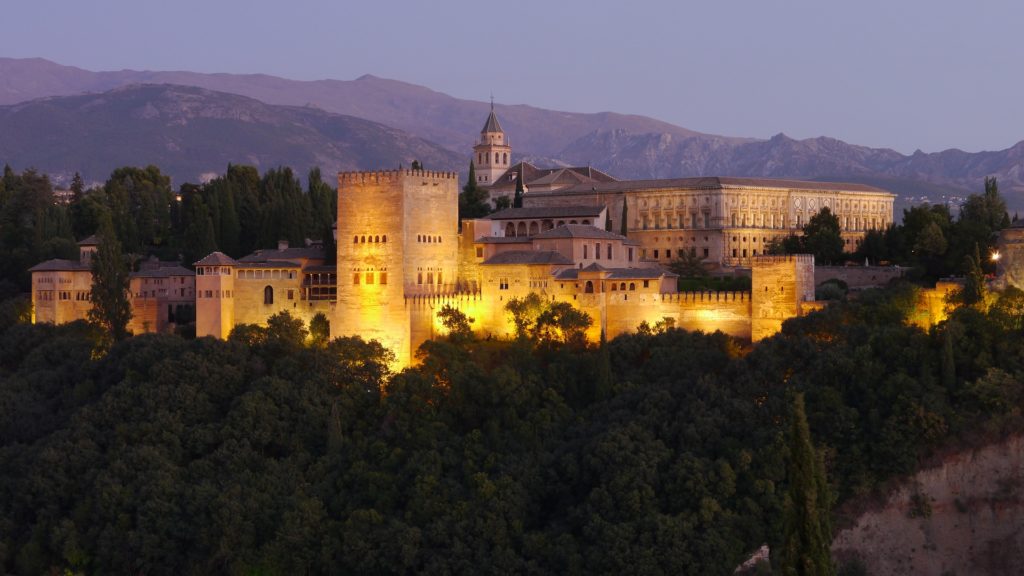
The Alhambra at dusk
We answer the most common questions from travellers visiting the Alhambra:
1. How long is the visit?
The full visit on average lasts about 3 hours, in my experience it takes a little longer and you have to leave some time to rest, as it involves a lot of walking over the vast terrain.
2. Is it worth buying the full ticket?
Yes. The Alhambra complex is a World Heritage Site and has incalculable artistic and historical value. We recommend visiting all the places open for visitors (Alcazaba, Nasrid Palaces, Generalife and the Palace of Charles V), as well as exploring the surroundings.
3. When is the best time to visit the Alhambra and Granada?
The best time of the year for a visit are October-November and February-April. The city has a pleasant temperature, there is much less tourism, but Granada continues to be vibrant. The heat of the hottest months can be stifling.
4. Are night visit tickets to the Alhambra worth it?
Yes, they are an interesting alternative to explore this wonderful monument, however the entrance during the day is more recommended since you will be able to appreciate in greater detail the splendid legacy of the Alhambra.
5. At what time is it best to visit the Alhambra?
The best time is in the early morning, when the venue opens its doors to the visitors. You can enjoy less heat and less people.
6. Is it worth taking a guided tour?
Definitely. An expert guide will help you understand the history of specific places, fully appreciate their art and architecture and then better remember the monuments with all their details. Each room, column and room, especially in the Nasrid Palaces, hides exquisite details of high value.
7. Is it better to buy tickets on-line or at the box office?
You have to buy tickets on-line in advance to be sure you will be able to enter the Alhambra on a specific date. Don’t risk, because there are limited spots available – in particular for the Nasrid Palaces, with time slots, and once they are sold off, you can’t enter. Moreover, in the high season the queue is scary, so make your life easier and book your ticket in advance.
Tickets and reservations
Here are the most recommended tours for the Alhambra:
- Guided tour with 2.5-hour entrance to the Alhambra and Generalife.
- Guided tour with entrance in a small group for 3 hours.
- Private tour of the Nasrid Palaces.
Itinerary: The Main Points of Interest in the Alhambra
1. Justice Gate (Puerta de la Justicia)
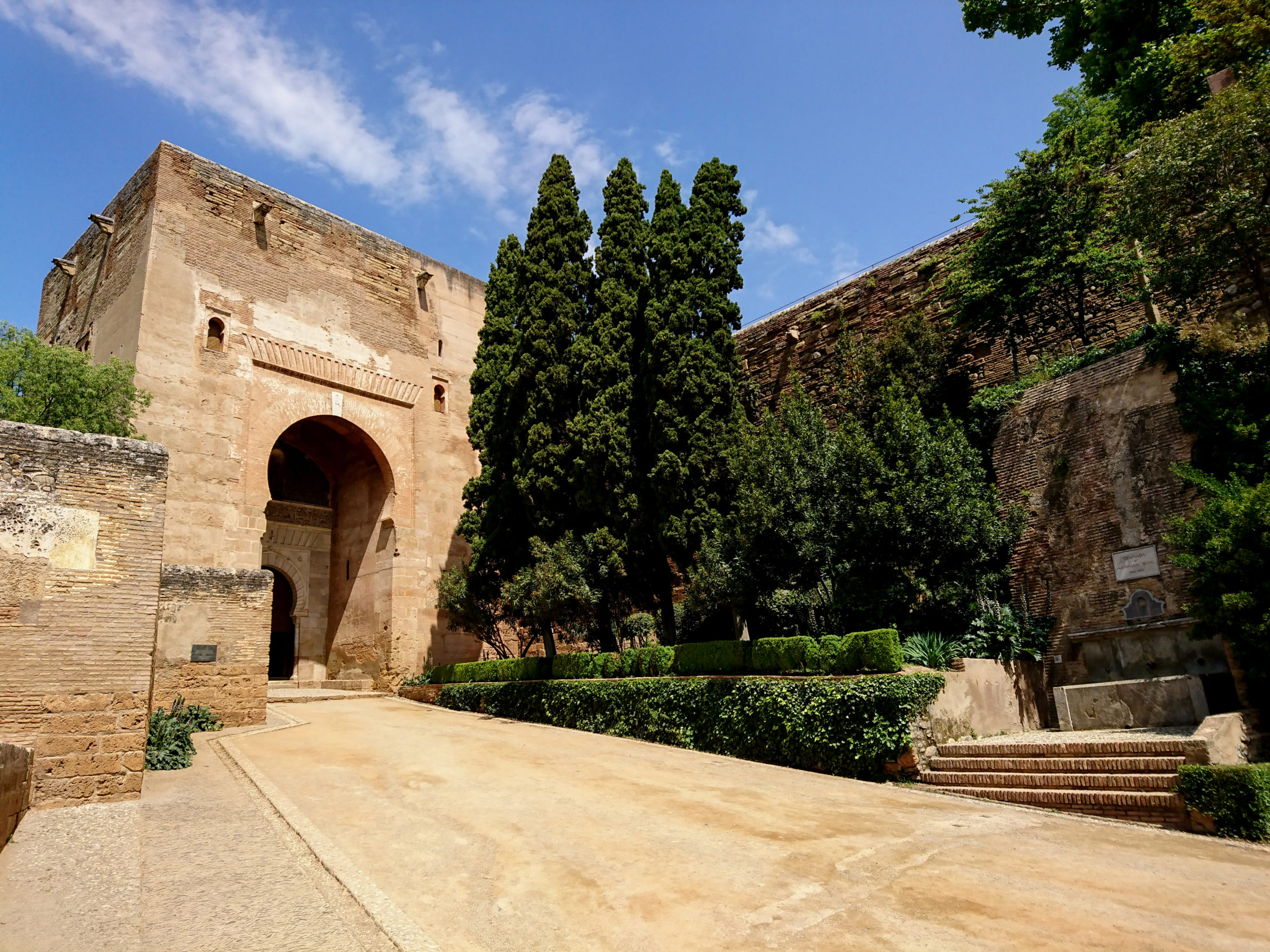
Justice Gate (Puerta de la Justicia)
We recommend starting the visit through the Justice Gate (Puerta de la Justicia). This tower – gate is an architectural example of Islamic defensive art and features a magnificent Arabian horseshoe arch.
Inside you will find an exhibition on the history of the tower with information on the site. Depending on the time you have, you can pass through it more or less quickly to get to the main parts of the complex.
Start the tour in the lower part of the complex and walk through the Alhambra forest for about 15 minutes.
The steep slope, next to the forest and the monuments that you will find, both Christian and Arab, will prepare you for the spectacular sight.
At the end, before arriving, you will see the slope and sharp curves that served to slow down enemy forces. All this forms a picturesque path that emerges from the turbulent defensive history of the Alhambra.
2. Alcazaba Citadel (Alcazaba)
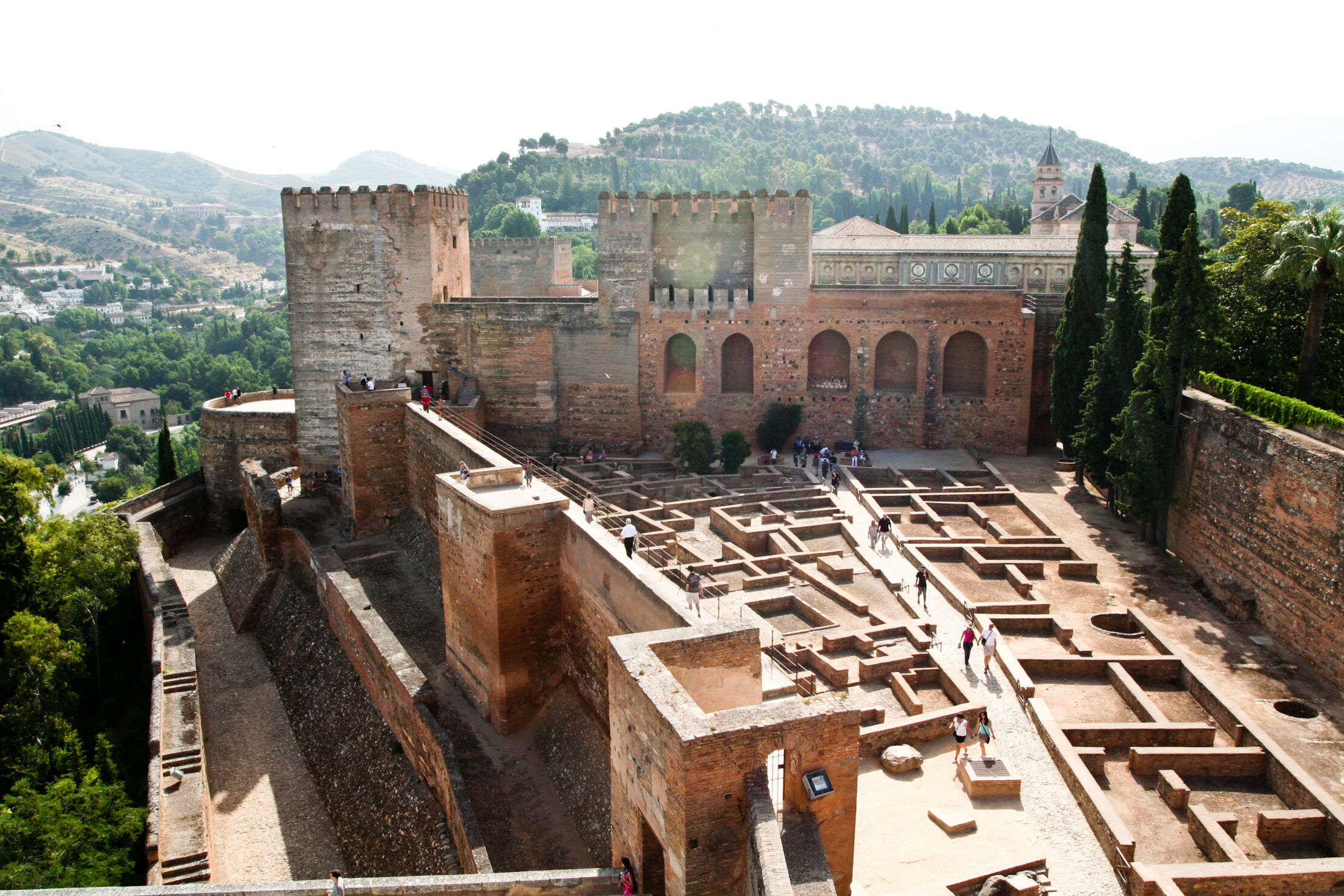
The Alcazaba of the Alhambra
To get to the Alcazaba (old fortress) from the Puerta de la Justicia, you will pass through the Vino gate and the Plaza de los Aljibes (cisterns). Right before arriving there, you will see the Garden of the Ramparts (Adarves) that are located at the entrance to the Alcazaba and from them you can see a beautiful view of the city.
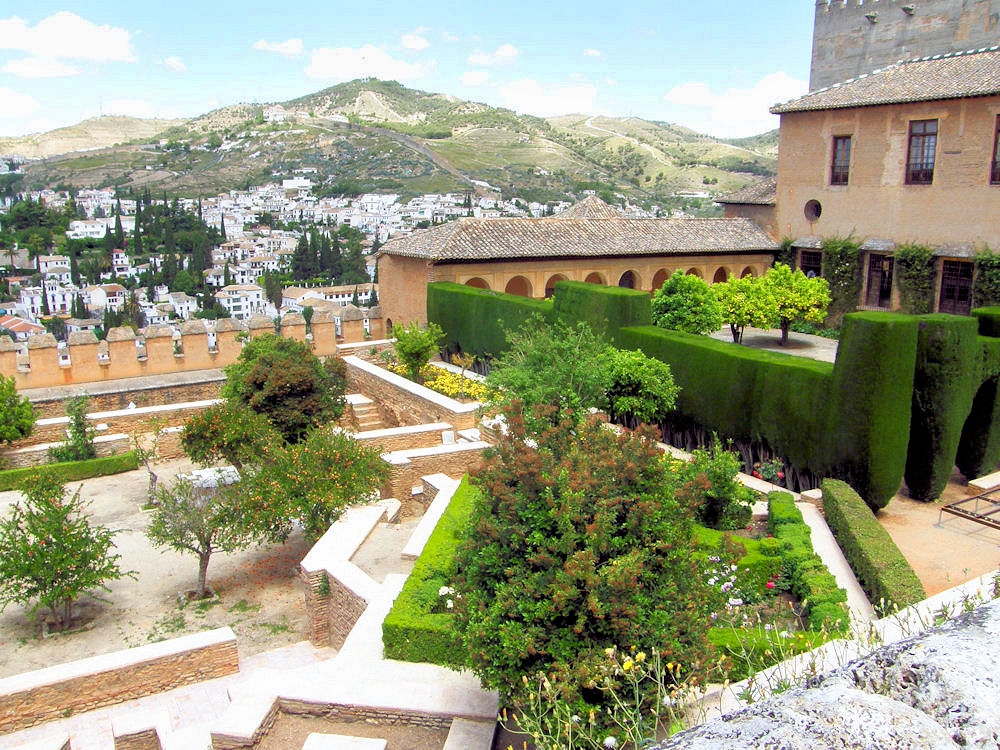
The Garden of the Ramparts in the Alhambra
La Alcazaba is one of the oldest parts of the Alhambra complex, where the old fortress was located. Today its interior offers the remains of its past while the exterior walls are perfectly preserved.
3. Carlos V Palace (Palacio de Carlos V)
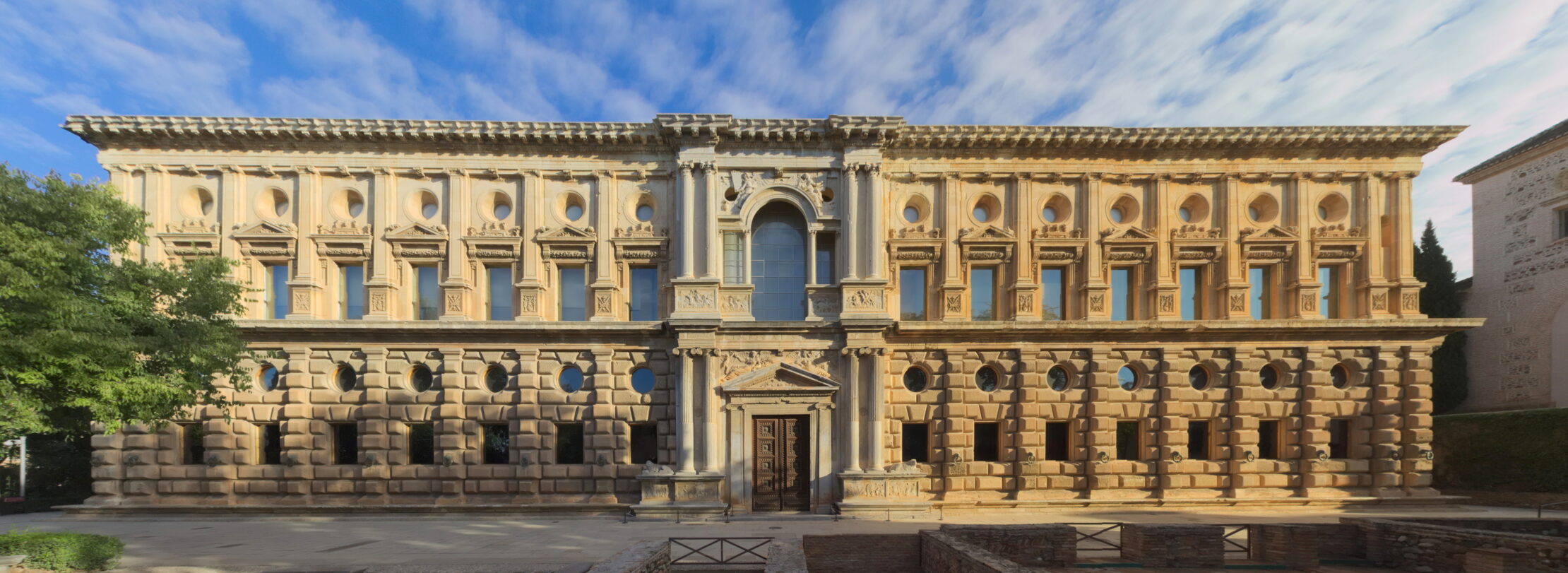
The Palace of Charles V in the Alhambra
The Palace of Carlos V is a masterpiece of the architect Pedro Machuca, a student of Michelangelo. A unique building for its square plan and large circular patio, something unprecedented in Renaissance architecture.

Circular courtyard of the Palace of Charles V in the Alhambra
Despite its beauty, its style clashes head-on with the style of the Nasrid Palaces and often arouses mixed feelings in visitors. Regardless of the reaction, take time because it is a unique building in an emblematic place. In addition, today it houses the Alhambra Museum that has a collection of subtle Nasrid art and the Museum of Fine Arts.
4. Nasrid Palaces (Palacios Nazaríes)
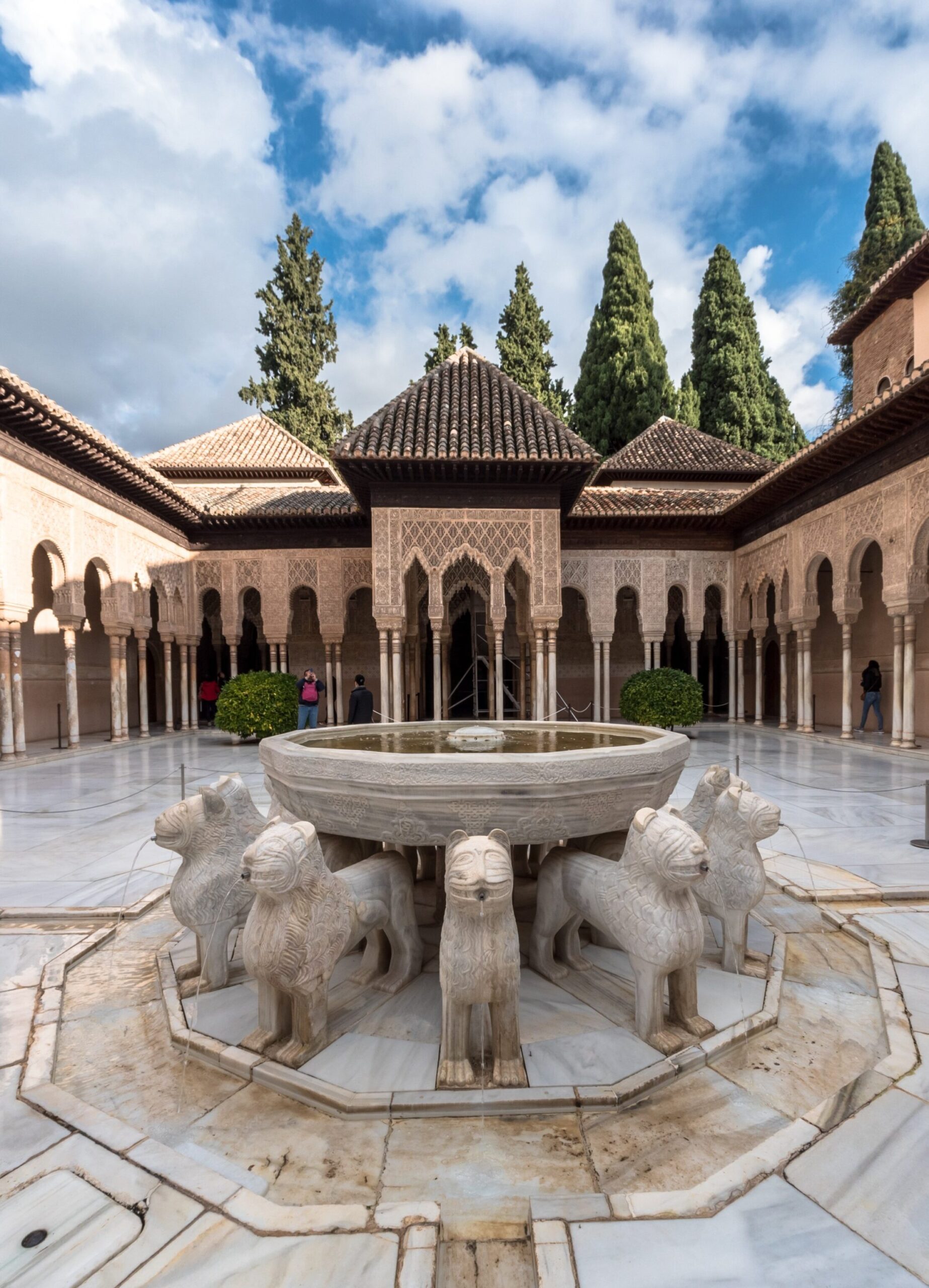
The Lion Fountain in the Palace of the Lions in the Alhambra
The Nasrid Palaces are built of brick, wood and stucco continuing the Islamic tradition of not competing with Allah’s creations. In total there are three palaces:
Mexuar Palace
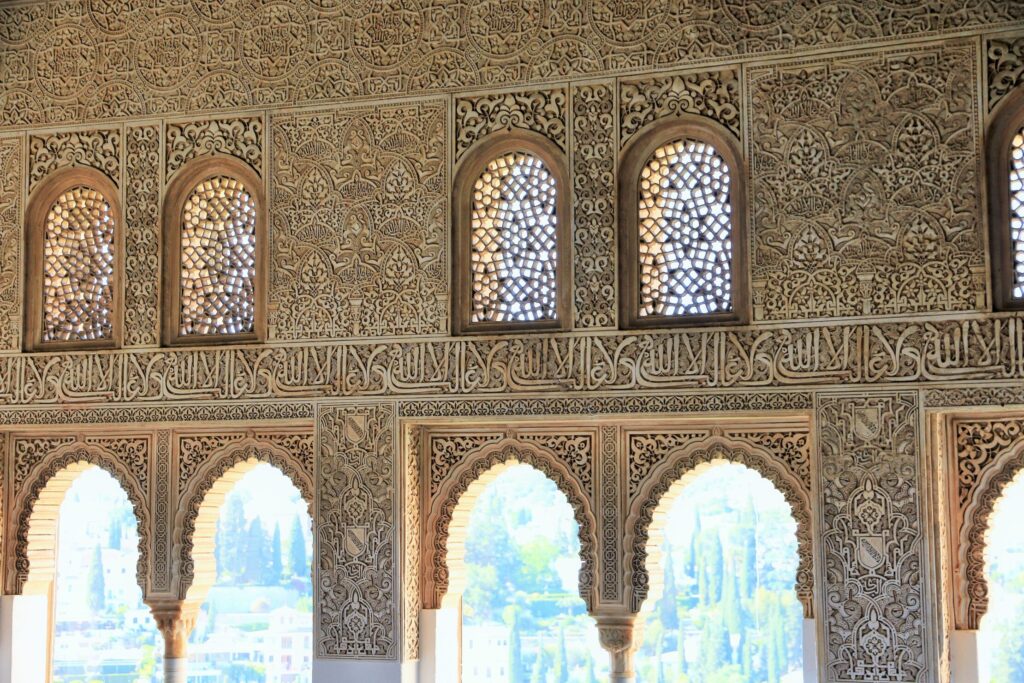
Windows of Mexuar Palace in the Alhambra
It is the least preserved due to the numerous reconstructions and uses that it has been given over time. It was used as a place of prayer and meetings between the Sultan and his ministers.
It offers a less ornate interior than the others, but it’s still very beautiful.
Comares Palace

The Court of the Myrtles
This palace was used to receive dignitaries and to deal with diplomatic matters. Here is the main throne and it is famous also for the Patio of the Myrtles (Arrayanes), which stands out for its symmetrical design, the central pool and the delicate motifs and inscriptions on the arches.
Palace of the Lions
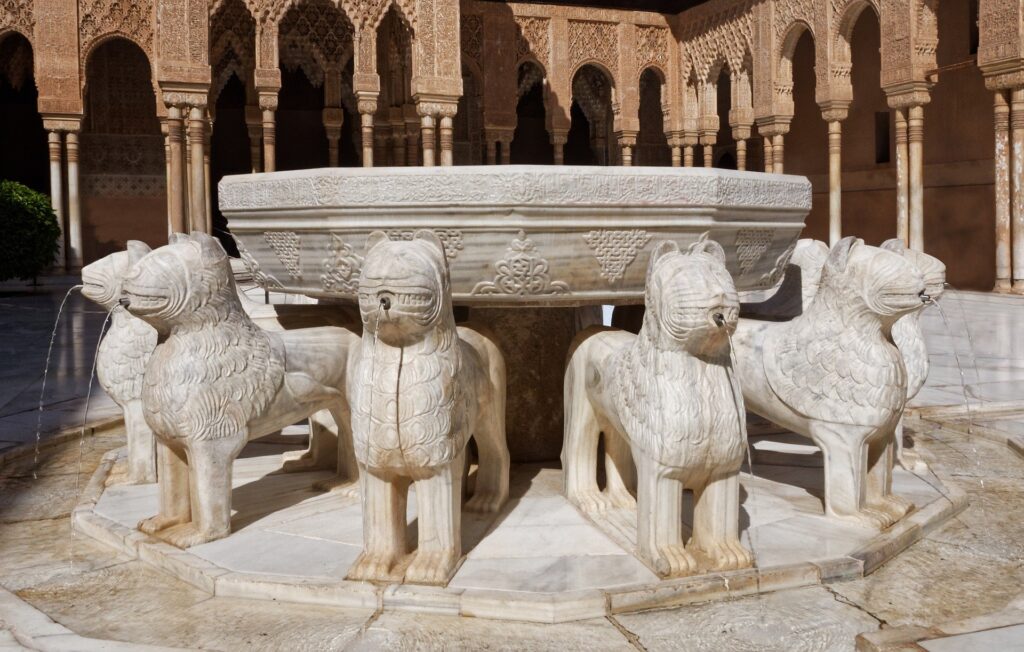
The Lion Fountain
The most iconic image of the Nasrid Palaces is associated with the lions that make up the circular fountain of the palace with the same name.
It was the Sultan’s private area, and the characteristic courtyard, divided into 4 areas connected by 4 channels, is a conceptual representation of paradise.
Portico (El Partal)
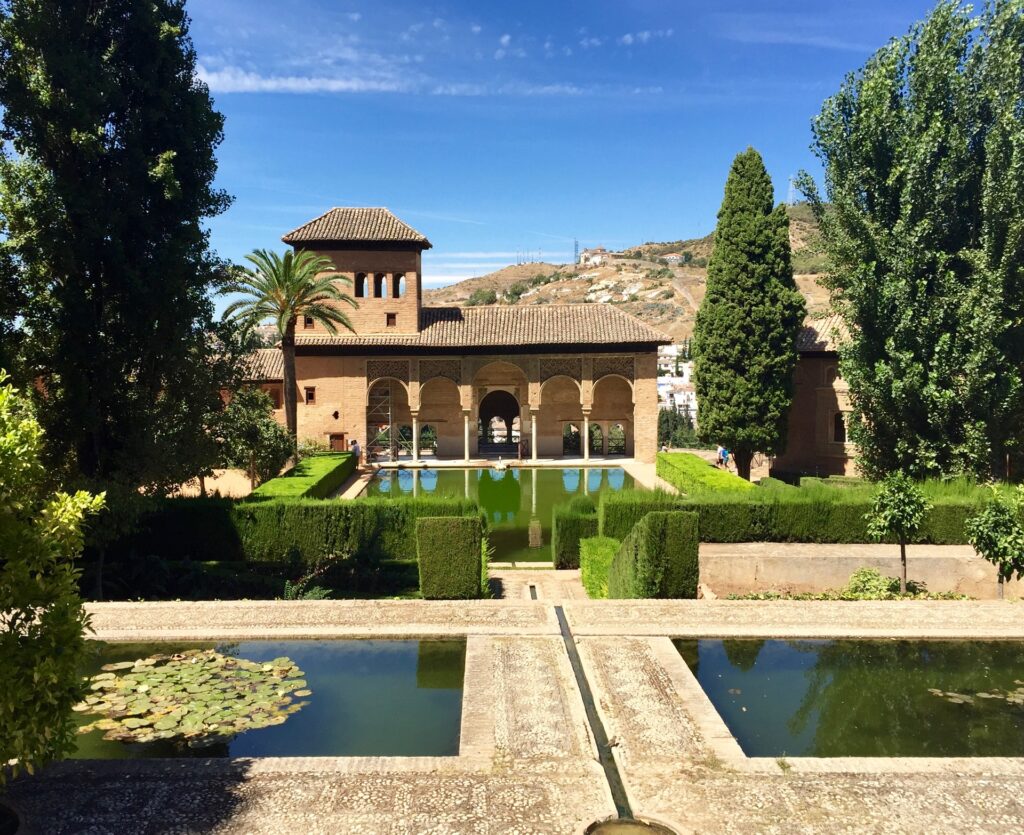
El Partal or the Portico
As we leave the Alhambra to enter the Generalife (the Summer Palace) we find a small garden and the Partal, which are only the remains of the residence of Sultan Muhammad III.
Nasrid Palaces Gallery
We cannot leave this section without a collection of photos that present some of the fabulous details of this wonderful complex:
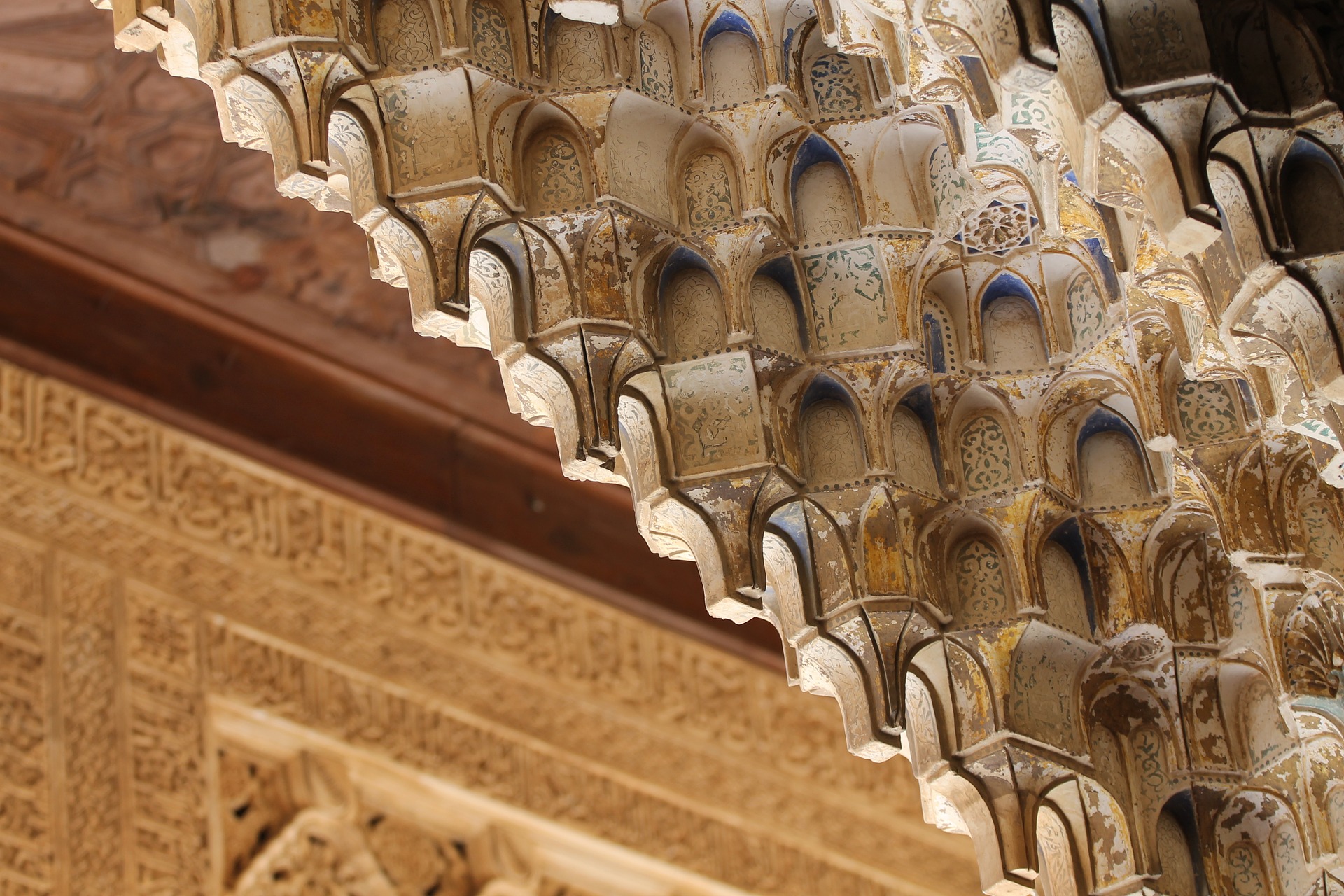
5. Generalife and its Gardens (La Generalife)
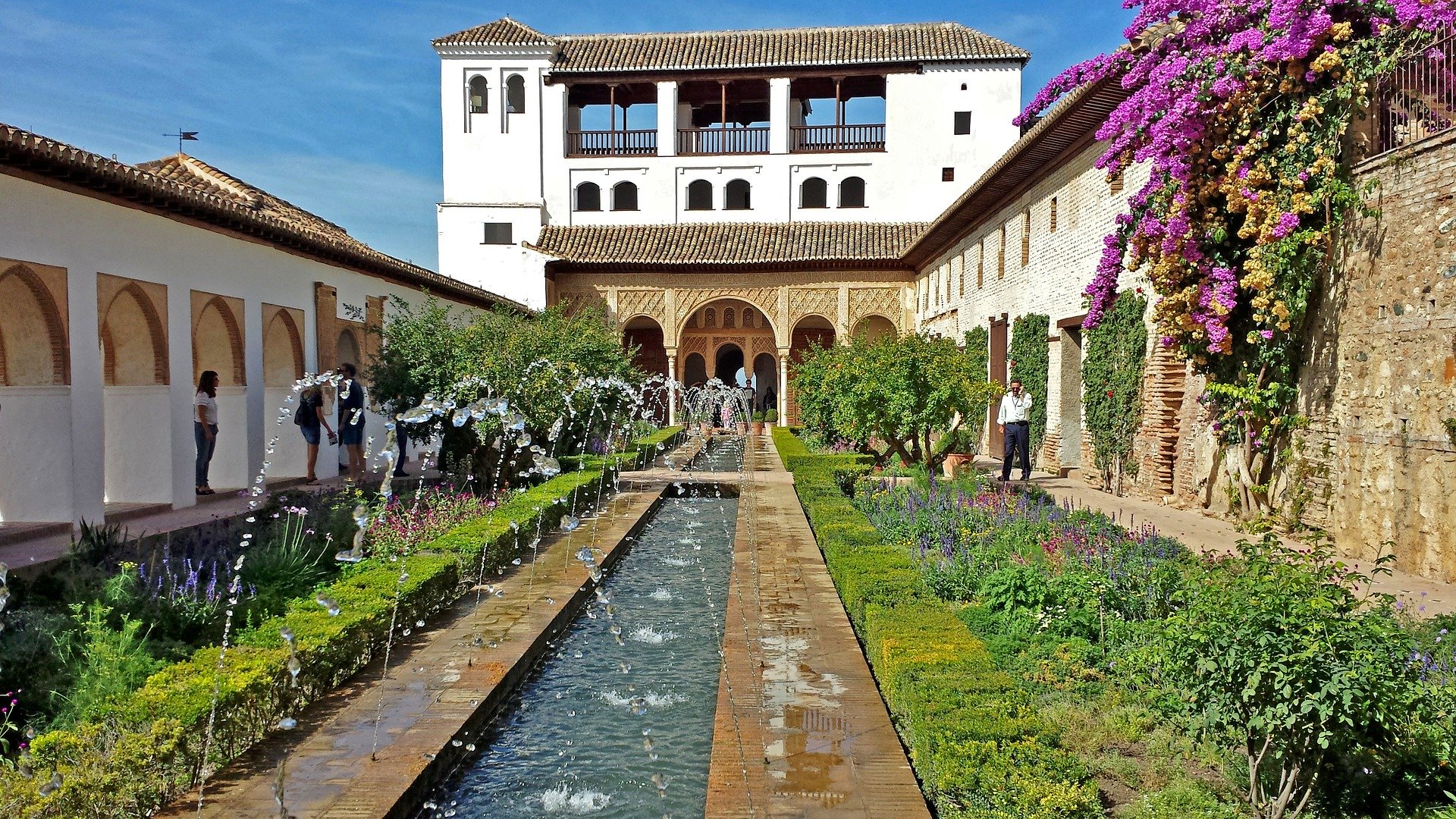
The Patio of the Irrigation Ditch in the Generalife gardens, Alhambra
Continue the exploration through the gardens of the Portico (Partal), where you will go out towards the other large area of the complex, the Generalife. This garden-filled villa (or palace) was the Sultan’s summer residence, and its name means the architect’s garden.
First you will find several Arab towers that make up the perimeter of the complex along the so-called Passage of Towers (Paseo de las Torres). Some of them have fine details that deserve your attention, such as these towers: Torre de los Picos, Torre del Cadí, Torre de la Cautiva and Torre de las Infantas. They also offer good views of the complex and its exterior.
The Torre de la Cautiva and the Torre de las Infantas are twin towers with richly decorated rooms.
Once past the Towers, you can fully enjoy the numerous gardens, views and patios, such as the famous Patio of the Irrigation Ditch.
The Generalife Gallery
Get inspired by our photographs of the patios and views of the Generalife:
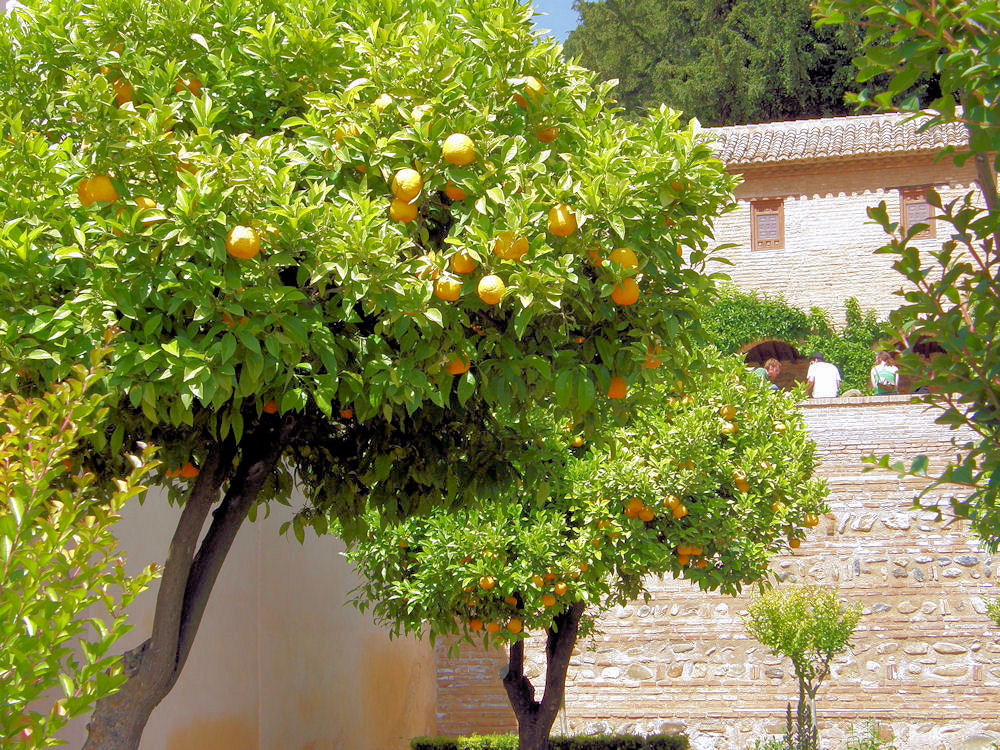
Questions about The Alhambra
We will conclude our guide here. Within the Alhambra complex you will find many more places of interest and of great artistic and historical value that will surprise you.
Have you been to the Alhambra? Do you have any question? Do you want to know more and/or did you like the article? Do not forget to share and leave your comment. We are waiting for you ;)

